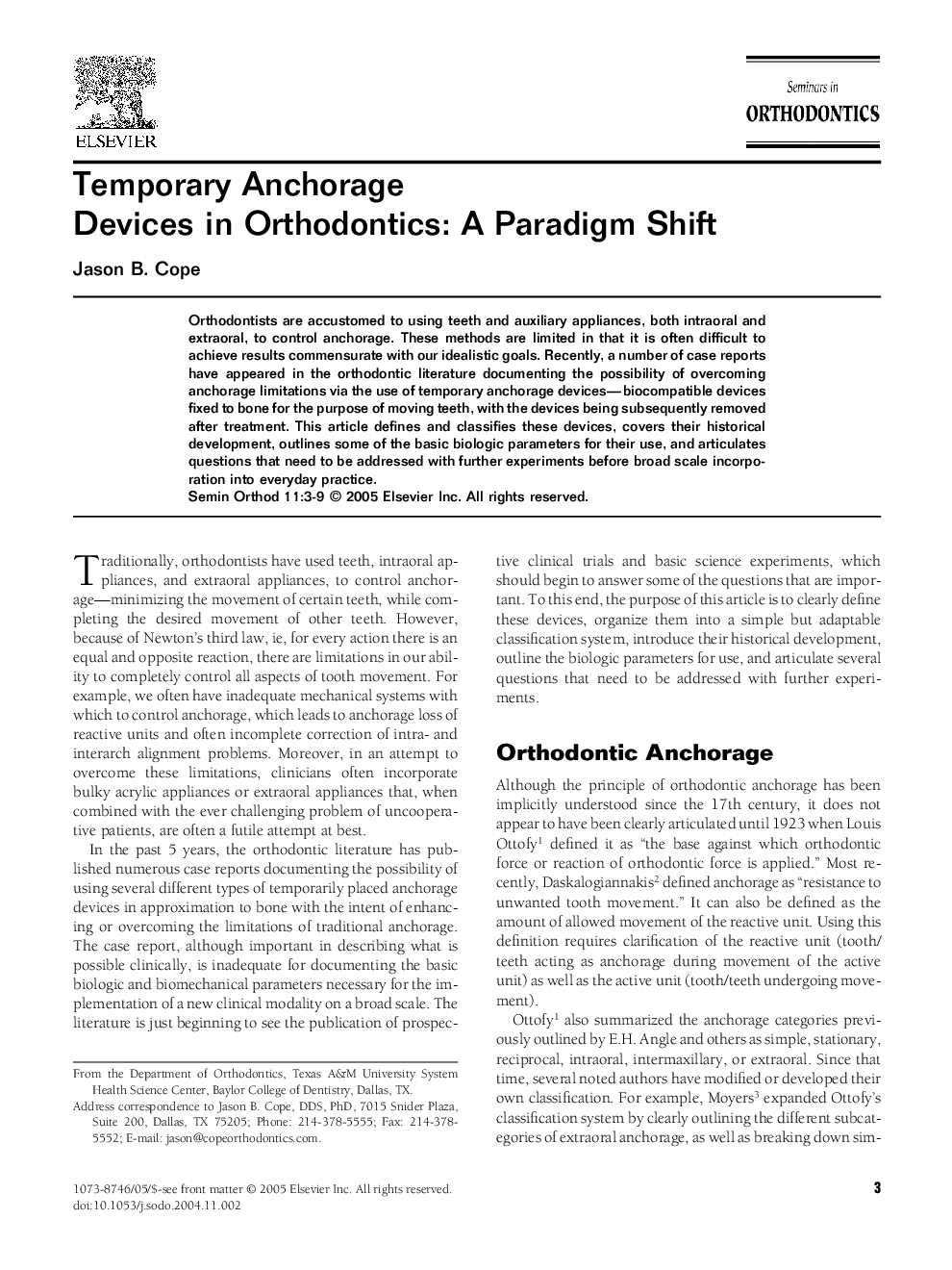| Article ID | Journal | Published Year | Pages | File Type |
|---|---|---|---|---|
| 9220493 | Seminars in Orthodontics | 2005 | 7 Pages |
Abstract
Orthodontists are accustomed to using teeth and auxiliary appliances, both intraoral and extraoral, to control anchorage. These methods are limited in that it is often difficult to achieve results commensurate with our idealistic goals. Recently, a number of case reports have appeared in the orthodontic literature documenting the possibility of overcoming anchorage limitations via the use of temporary anchorage devices-biocompatible devices fixed to bone for the purpose of moving teeth, with the devices being subsequently removed after treatment. This article defines and classifies these devices, covers their historical development, outlines some of the basic biologic parameters for their use, and articulates questions that need to be addressed with further experiments before broad scale incorporation into everyday practice.
Related Topics
Health Sciences
Medicine and Dentistry
Dentistry, Oral Surgery and Medicine
Authors
Jason B. Cope,
